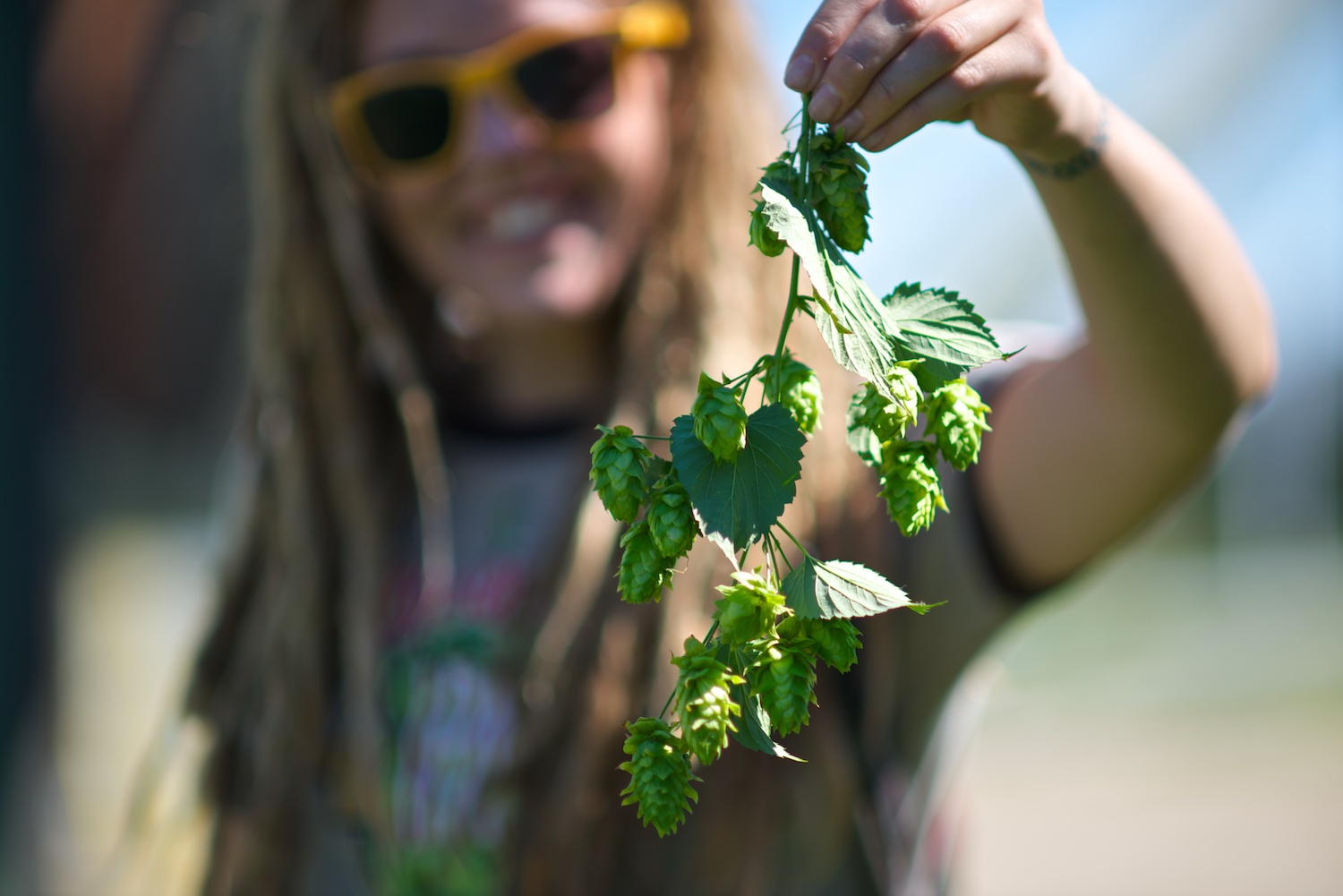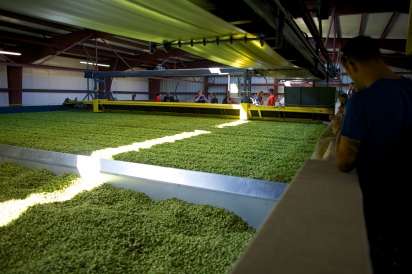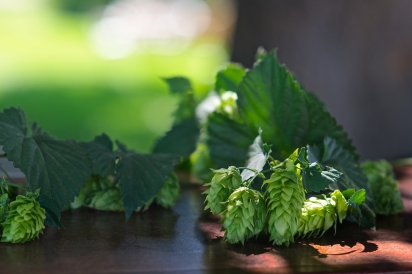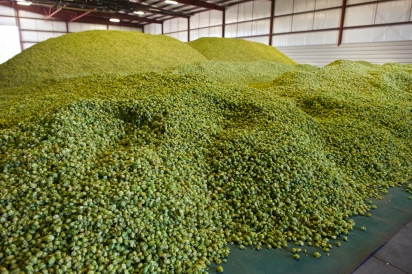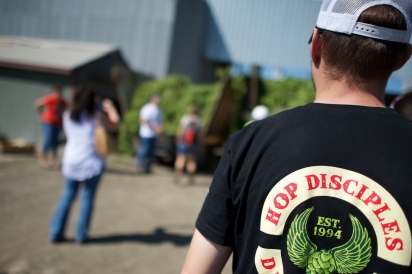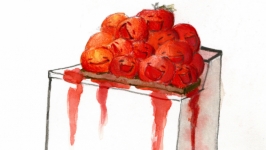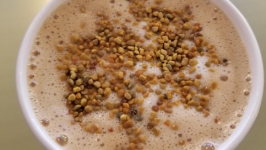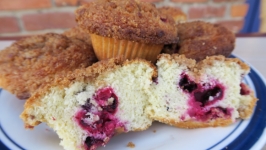Hoppin’ Hops: Idaho at the Center of Beer Culture
The hop fields of Wilder are being turned upside down. Two men stand in the bed of a truck and hang long 20-foot plants upside down on overhead hooks. Swags of leaves and lighter-green flower clusters fly above me. A wrist flick sends another up a metal track to join the parade to the top of a green metal-clad building that rumbles with inner machinery. There, a man armed with batons directs plants into the maw of the hop picker.
The excitement and smells of the harvest have changed little since southwest Idaho’s first commercial crop ripened in the 1930s, but the hop market has had a wild ride. Changes in the beer industry have rocked the hop world to its roots. The western Treasure Valley is one of four small regions where hops are grown commercially in the United States. The Wilder area and a large farm near Bonners Ferry together produce eight percent of the country’s hops; the rest are grown in Washington and Oregon.
Standing under the flying plants at Jackson Hop Farm, the air is infused in hop incense. The harvest fragrance permeates the workers’ clothing and will linger for months in growers’ trucks. Originally added to beer as a preservative, hops provide bitterness and a diverse palette of flavors and aromas. The flower clusters, called cones, roll along a belt from the picker to the drying kiln in the adjacent building. Belts spread the cones over fabric-draped grated floors; eight-foot tall fans push warm air up through the hops. Other belts move dried cones to be pressed into 200-pound bales. Most hops are later processed into pellets that look remarkably like rabbit pellets. Each hop farm has its ownpicker and kiln to dry the perishable crop during the month-long harvest. Jackson Hop Farms’ Nate Jackson utilizes a new kiln that handles the delicate cones more gently than older systems.
In Jackson’s fields, mechanical cutters gather lanky plants called bines. Hops climb using sticky hairs while vines use tendrils. The plants collapse as their supporting cords are cut from overhead wires. Trucks festooned with garlands of hops stir contrails of dust as they rush the plants to the picking machine.
In the hop world, females rule. Only female cones have enough flavor-and aroma-containing lupulin glands to be profitable. Serendipitously, male and female flowers live on separate hop plants. Males are banished to prevent unplanned reproduction, as seeds lower hop quality and cause off-flavor in beer. Ann George, executive director of Hop Growers of America said, “As much as we love our hop guys, we don’t want males in the field.”
Hops have been used in Idaho since brewers followed miners to the Gem State. In 1889, 33 breweries served the state’s fewer than 100,000 residents. Prohibition and the growth of large breweries in the East ended Idaho’s first crop of breweries by 1961. For hop growers, the large breweries simplified marketing. Diane Haas, a sixth generation grower explained, “There were two buyers; you sold to the one with the best price.” Haas got off her tractor to talk with me; her dad, Mike Gooding, joined us in the shop at their Parma farm. Selling their crop might have been easy, but hanging on through the whipsaw price swings was not. “There used to be steep peaks and long valleys. You hoped the few good years were enough to get through the valleys,” Haas added.
Not all growers survived.
One of the darkest valleys started with good times at the end of the 1990s. New hop varieties produced more of the alpha acids that impart bitterness to beer. Brewers could get the same effect with fewer hops, so hops “packed the pipeline,” resulting in a surplus, George explained. Mergers and changes at the large breweries further reduced demand. Prices fell and growers went out of business. The surplus disappeared. A run of poor hop-growing weather plus a warehouse fire created a shortage in 2007; prices soared in 2008. “Craft brewers got hammered,” George remembered. Big brewers had big hop contracts; those without contracts got scraps.
Surviving hop growers established new fields, and new growers such as Jackson, got into the business. The Caldwell native came from a family of CPAs and owned a landscaping business. His landscaping crew became a farming crew and Jackson used his plant propagating skills to produce an impressive “baby crop,” the technical term for the harvest from a first-year field. The shortage and price spike were a wake-up call for craft brewers. They reached out to the hop industry through their professional group, the Brewers Association. “[The group] has done a fabulous job finding out what brewers need and encouraging them to sign contracts,” George said. Today, even small craft brewers contract hops years in advance. These agreements provide the stability growers need to establish new fields and build multi-million dollar hop pickers and kilns.
In 2013, craft brewers produced a bit less than eight percent of the country’s beer. Their beer has an outsized hop print: craft brewers add, on average, six times as much hops as large brewers to each barrel. Growers are listening to the craft industry and watching its high hopping rates and 18 percent annual growth rate. They are responding by shifting from high alpha acid to aroma varieties. The latter contain fewer bittering acids and more of the complex flavors that create unique craft brews. Five years ago only 30 percent of US hop acres were in aroma varieties; now these grow on almost 60 percent of those acres.
Last year Idaho matched, and passed, the number of breweries operating in the state in 1889. Today almost 40 craft breweries serve the state’s nearly 2 million residents. Treasure Valley brewers, restaurateurs, and even backyard biermeisters are discovering the nearby hop farms. Visitors sample fresh hops, talk beer, and breathe the essence of future IPAs and lagers.
Kevin Bolen, a brewer at Sockeye Grill & Brewery, creates freshhop beers each year and is testing new varieties developed by Jackson. “It’s fantastic, having hops here in southern Idaho. I love that we can go a half hour away and get great hops,” Bolen said.
Harvest-time visitors add to the workload during the busiest farm season, but the growers seem to enjoy the recent interest. Mike Gooding said, “The last two years have been more exciting than the previous thirty.”
Jackson Hop Farm
Hop Growers of America | @usahops
Sockeye Grill & Brewery | @sockeyebrew


